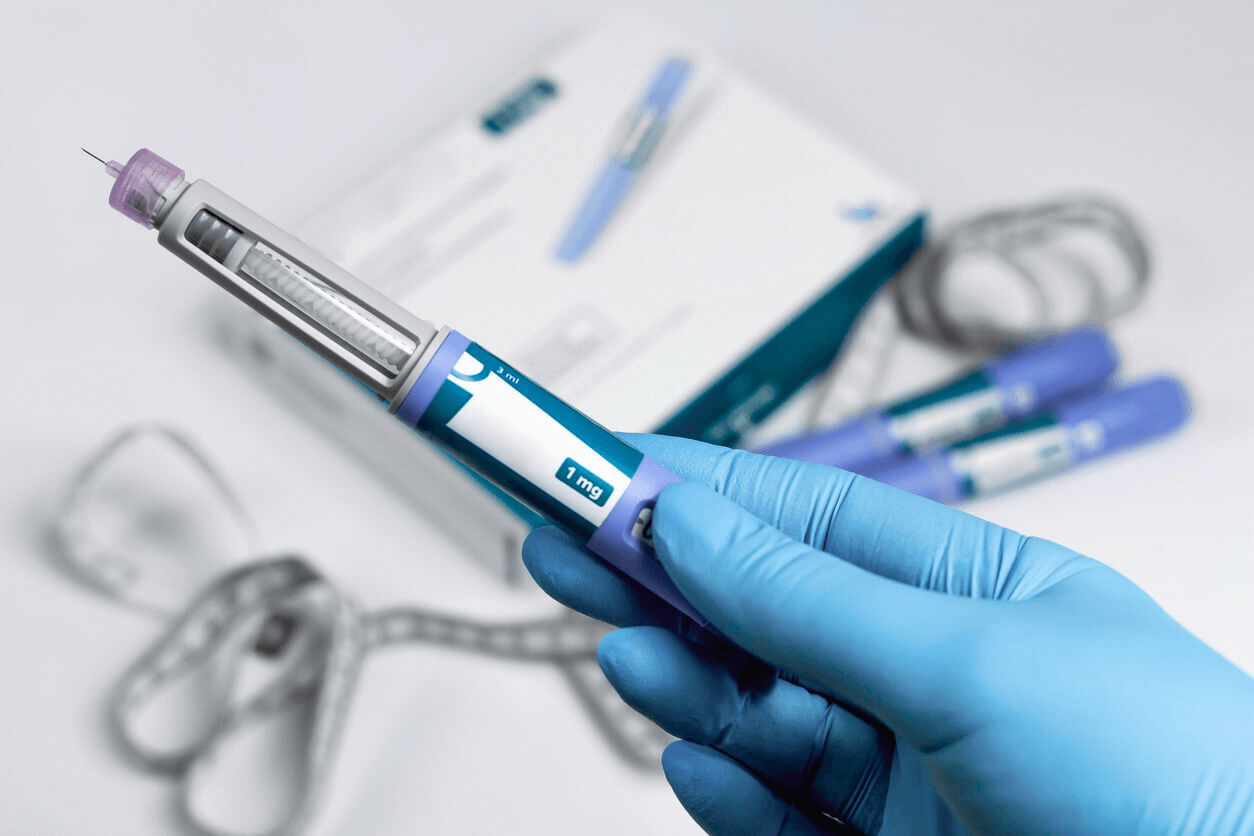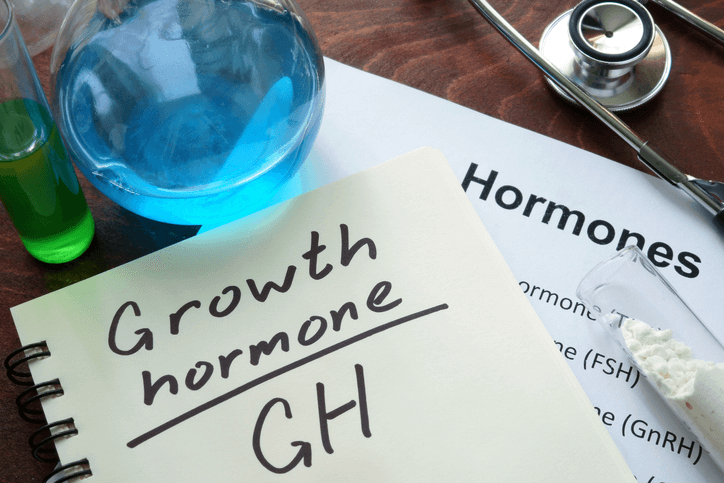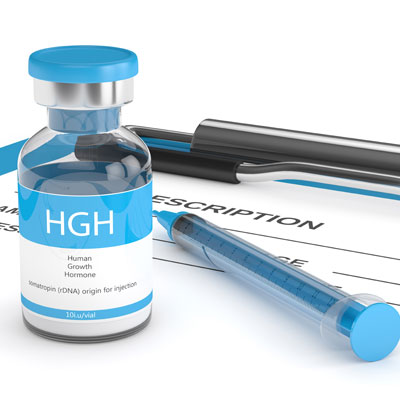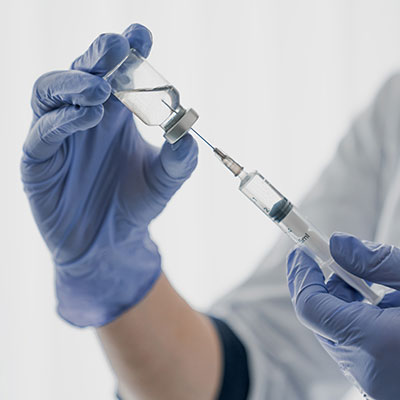
How to Safely and Correctly Buy and Use Genotropin
Genotropin is one of many drugs available to treat growth hormone deficiency in children as well as adults with growth hormone decline. The drug is a very popular version of HGH therapy, particularly among men who have been diagnosed with “adult-onset” or “age-related” growth hormone deficiency.
However, there is a right way and wrong way to buy and use Genotropin. Like all growth hormone injections, this drug is only available with a doctor’s prescription. Using it without proper medical supervision or the advice of a healthcare provider can result in serious side effects or adverse effects.
Let’s look at what it is, how to use it, and how to choose the right dose of Genotropin.
What is Genotropin?
Genotropin injections are the version of synthetic human growth hormone (HGH) made by Pfizer. Pfizer’s Genotropin, like all HGH injections, is a brand name of the prescription medication known as somatropin. Somatropin treatment entails a man-made version of HGH derived from human DNA. As such, it is practically identical to the HGH normally secreted by the pituitary gland; therefore, it is quite effective in raising HGH levels and treating the symptoms of growth hormone deficiency or GHD. This makes it ideal for replacing declining growth hormone in adults or children with an arrested growth rate.
What is Genotropin Prescribed For?
Growth hormone therapy is prescribed for men, women, and children who have been diagnosed with a growth hormone deficiency. All HGH injections are the same medication, a synthetic form of human growth hormone known as somatropin.
There are several brands of somatropin available from various pharmaceutical companies. Genotropin is made by Pfizer and is one of the most popular brands of HGH injections prescribed at our clinic.
Genotropin is indicated for use in children who have failed to achieve age-appropriate growth milestones. It can also be prescribed for patients suffering from “muscle wasting” conditions such as HIV/AIDS. It is also prescribed for adults who are suffering from adult-onset growth hormone deficiency due to a childhood GHD that has persisted into adulthood or for age-related HGH decline.
For most patients, the many benefits of Genotropin injections far outweigh the potential side effects. Injection site issues and allergic reactions are the most common adverse effects of this drug. Other common adverse reactions include abdominal pain, fluid retention, joint pain, knee pain, muscle pain, and carpal tunnel syndrome.
This medication can cause drug interactions. Be sure to tell your doctor about any medications you are taking, including OTC drugs, before initiation of treatment.
Female patients should tell their healthcare provider if they are pregnant or plan to become pregnant before taking HGH.
Genotropin Benefits
In children, HGH therapy can result in substantial catch-up growth for patients with growth failure. However, GHD does not only affect children, and HGH has medical use beyond pediatric patients.
HGH is a critical hormone for men; however, clinical studies have proven that your level of HGH declines as you age. This can lead to age-related or adult-onset growth hormone deficiency (GHD.)
The recommended treatment for growth hormone deficiency is prescription growth hormone injections such as Genotropin. The many benefits of Genotropin therapy for men with inadequate secretion of HGH include:

- Reducing fat and promoting lean body mass.
- Increasing lean muscle mass and decreasing fat and adipose tissue.
- Increasing exercise capacity
- Improving muscle strength and bones lowers the risks of osteoporosis and osteoporosis-related fractures.
Other documented benefits of Genotropin therapy for men include:
- Reduction of symptoms of erectile dysfunction
- Increased sex drive.
- Improved mood.
- Improved memory and focus.
- Improved skin and hair health.
- Improved lipid profile, including reduced triglycerides and “bad” cholesterol.
- Reduced risk of cardiovascular disorders.
The guidelines for prescribing Genotropin state that the risks of dangerous side effects associated with Genotropin therapy are low when compared with Genotropin’s benefits. As we do at our clinic, prescribing information also suggests that Genotropin therapy works best when dosages are tailored to a patient’s unique needs and lifestyle.
Almost all of our Genotropin therapy patients go through the course of the six-month program of Genotropin injections with few if any, side effects. If any side effects or issues arise, these are usually easily mitigated by simply adjusting your dose of Genotropin.
How Soon Could I Expect to See the Benefits of Genotropin?
As you build toward your treatment goal, you will not take long to experience the benefits of the Genotropin mentioned above. Most of our patients using Genotropin HGH see a positive clinical response and results within the first few weeks of human growth hormone treatment.
Some of the most immediate effects of growth hormone treatment are increased energy, better sleep, and weight loss.
*Genotropin Dosage
Like all HGH injections, your somatropin dose of Genotropin is designed to be titrated. Dose titration means you will be started at the lowest effective dose and slowly built up to a larger dose.
The daily dosage of Genotropin® varies by age, weight, and the condition it is prescribed for. The weekly dose should be divided into 6 or 7 subcutaneous injections. According to the Prescribing Information provided by the National Institutes for Health, Genotropin® should be administered subcutaneously as follows:
- Pediatric GHD: 0.16 to 0.24 mg/kg/week
- Prader-Willi Syndrome: 0.24 mg/kg/week
- Small for Gestational Age: Up to 0.48 mg/kg/week
- Turner Syndrome: 0.33 mg/kg/week
- Idiopathic Short Stature: up to 0.47 mg/kg/week
- Adult GHD: Either a non-weight-based or a weight-based dosing regimen may be followed, with doses adjusted based on treatment response and IGF-I concentrations
- Non-weight-based dosing: A starting dose of approximately 0.2mg/day (range, 0.15-0.30 mg/day) may be used without consideration of body weight and increased gradually every 1-2 months by increments of approximately 0.1-0.2 mg/day.
- Weight-based dosing: The recommended initial dose is not more than 0.04 mg/kg/week; the dose may be increased as tolerated to not more than 0.08 mg/kg/week at 4–8-week intervals.
- Genotropin cartridges are color-coded to correspond to a specific delivery device.
- Never take more than your usual dosage.
How to Inject Genotropin
Genotropin can be administered via injectable devices or using standard syringes filled with reconstituted medication. The injectable devices include the Genotropin® Multiuse Pen and the Genotropin MiniQuick® pen. Here are some general guidelines for any subcutaneous HGH injections using standard syringes. More detailed instructions for using the Genotropin pens will follow in the next section.
When you inject reconstituted Genotropin, you will use the same thin needles as diabetics for their insulin, along with the company’s proprietary Genotropin Mixer.
- Choose your injection site. The most common injection site for subcutaneous injection of growth hormone is in the belly. Other sites include the thigh or buttocks. Rotating injection sites to avoid the risk of infection, inflammation, or other injection site reactions is important.
- Wipe down your chosen injection site with the supplied alcohol swabs.
- After withdrawing the correct dosage from the vial, it will be injected into the injection site.
- Use exactly as prescribed by your doctor.
- Do not use in larger or smaller amounts or for longer than recommended.
- Follow the directions on your prescription label.
- Do not inject this medicine into red, sore, infected, or injured skin or muscle. Always check for air bubbles before injecting.
Your injections should always be free of particulate matter. If the solution is cloudy or particulate matter is present, discard it and do not use it.
Dispose of needles and used pens in an appropriate sharps container. Do not mix with household.
Overview of the Genotropin Injection Devices
Genotropin MiniQuick Pen – The Genotropin® MiniQuick is a human growth hormone delivery device in the form of a pen.
The pen is a preservative-free, pre-measured disposable pen featuring:
- No dose setting—each MiniQuick contains one pre-measured dose
- No refrigeration needed
- Packaged in a 7-day supply
- The above devices can be used to deliver 0.2 mg, 0.4 mg, 0.6 mg, 0.8 mg, 1.0 mg, 1.2 mg, 1.4 mg, 1.6 mg, 1.8 mg, and 2.0 mg doses of Genotropin®.
- The Genotropin Multiuse Pen – The Multiuse Pen features:
- Digital display so you can easily see your selected dose
- The medicine mixes inside the pen—no vials to mix
- The dose can be dialed back if needed without wasting any medicine
- An optional needle guard hides the needle and keeps the pen stable while injecting
- Pen caps and covers can be customized with colors and designs
Using the Genotropin Mixer
The Genotropin Mixer is a handy device for reconstituting HGH powder. Upon inserting the two-chamber cartridge into the Mixer, you screw the plunger rod back into the holder, which will automatically combine the diluent and powder. Complete written instructions for preparation and Genotropin administration are provided with your HGH kit. These directions include photos, and we will also provide video links for online viewing of the preparation and injection process.
Remember never to shake your HGH solution, whether you are mixing a Genotropin pen, MiniQuick syringes, or cartridges in the Mixer. Rotate the unit side to side until the solution completes its reconstitution.
Do not use your HGH solution if you see any crystals or particles in the chamber. Changes in color or a cloudy appearance also negate medication use. Always check the expiration date before each use.
Who is an Ideal Candidate for Genotropin Therapy?
Other than children who need it for the treatment of growth failure, the ideal adult candidate for Genotropin therapy is usually a man between the ages of 40 and 65 who has been diagnosed with age-related growth hormone loss.
Growth hormone deficiency (GHD) is a recognized medical condition. GHD in adults is often the result of an untreated or poorly treated GHD that persists from childhood. However, it can also develop in adulthood without any previous history of GHD. Such cases are usually the result of the normal decline of HGH as we age and, thus, are referred to as “age-related growth hormone deficiency.”

Genotropin has been proven to be quite effective when prescribed for adults – particularly men – who are diagnosed with age-related growth hormone decline.
The symptoms of adult-onset or age-related growth hormone deficiency include:
- Chronic fatigue and a lack of energy
- Sexual health issues such as erectile dysfunction
- Weight gain
- Loss of lean muscle
- Increased feelings of anxiety and depression
- Cognitive difficulties, including memory issues
How Much Does Genotropin Cost?
Genotropin is most often prescribed and sold as the MiniQuick Pen. MiniQuick is a type of drug injector pen or medication pen. Such pens have been developed as a simpler, safer, and more efficient way to self-inject medications. Drug injector pens like the Genotropin MiniQuick contain a cartridge that is premixed to your exact dose of the drugs, eliminating any mixing or dosing errors.
| Genotropin MiniQuick Pen ® 0.2 mg
Genotropin MiniQuick Pen ® 0.4 mg Genotropin MiniQuick Pen ® 0.6 mg Genotropin MiniQuick Pen ® 0.8 mg Genotropin MiniQuick Pen ® 1.0 mg |
$420
$800 $1100 $1650 $2050 |
How to Buy Genotropin in the US
The only way to buy Genotropin in the US in MiniQuick or any other form is with a prescription. Like all HGH injections, Genotropin is a controlled substance; therefore, you cannot start any somatropin therapy without first getting a prescription. However, getting a prescription for Genotropin at the HGH Doctor is not difficult.
- Fill out our online appointment request form.
- See one of our doctors who specializes in hormone replacement therapies for men.
- Have your hormone levels checked with a simple blood test.
- If your results indicate that you would benefit from a prescription for Genotropin, it will be prescribed for you, and your Genotropin starter kit will be delivered right to your home! How to Buy Genotropin in the US: the only way to buy
*Dosing information is provided for informational purposes only and should not be construed as instructions for use. Consult your physician or pharmacist for guidance regarding your particular dose of Genotropin®
**Pricing information as per the time of publication. Pices of HGH due change. Check our Genotropin for Sale page for the most updated pricing information.
How Long Does Semaglutide Stay in Your System?
Semaglutide has been proven effective for weight loss and clinical outcomes. Medical professionals and clinical trials have found people losing dozens of pounds on this remarkable weight-loss medication in just a few short months. The most significant fat reduction occurred when people were on the drug for twelve to eighteen months, with study participants dropping as much as 16% of their total body weight over that time.
Getting rid of excess weight is not the only benefit of having semaglutide in your system. Additional benefits include its ability to help manage blood sugar levels, lower blood pressure and improve cardiovascular health. There may be psychological benefits as people begin to feel better about themselves as they shed significant pounds.
Semaglutide for obesity is given via subcutaneous injection in a weekly dose. But how long does this medication stay in your body? What happens when you stop using it, and are there ways to maintain your benefits of weight loss even after the drug is out of your system?
Drug Half Lives: How Long Does Semaglutide Stay in Your Body
Semaglutide is considered a long-term medication for obese patients. How long any drug or chemical remains in your body depends on the substance’s “half-life.” A drug’s half-life is the amount of time it takes for the concentration of the drug in the body to be reduced to half of its original level.
Semaglutide belongs to a class of drugs known as GLP-1 agonists. Almost all GLP-1 medications started life as diabetes medications because they treat diabetes in adults by stimulating insulin secretion. Semaglutide is the active ingredient in Ozempic, a popular diabetes drug that may very well have started the current booming weight loss prescription drug market. These achieve their therapeutic effects by mimicking the actions of GLP-1, the natural hormone in the body that regulates glucose metabolism and gastric emptying. Because GLP-1 agonists make you feel fuller longer, you eat much less and can achieve your weight loss goals. Maximum weight loss on the drug occurs when you combine your daily injections with a regular exercise routine.
Let’s take a closer look at how long semaglutide stays in your body.
How Often Do You Take Semaglutide?
Semaglutide is given as a once-weekly injection. It was designed for consistent, long-term use. It is a “long-lasting” medication, so you only have to take a single weekly dose to achieve results. How long the medication stays in your system is dependent on the drug’s “half-life.” The half-life of semaglutide is seven days, meaning after one week, 50% of the dose you took is still in your body. This also means that even once you completely stop taking this drug, it will take about seven weeks – or nearly two months before it will be totally out of your system.
How Long Do You Have to Take Semaglutide?
How long you must take once-weekly subcutaneous semaglutide injections will vary from patient to patient. Your healthcare provider will determine how long you must remain on semaglutide based on your needs and weight loss goals. However, depending on your progress and response to the medication, treatment with once-weekly semaglutide will usually last at least a year or longer,
You do not have to stay on this weight loss drug forever to meet your weight loss goals. Semaglutide remains in your body for almost two months after your last dose and can still provide all of its many weight loss effects. This long half-life is one of the reasons that most patients find it easy to maintain their weight loss even once they have stopped taking it.
Still, it would be best if you did not stop taking this medication without the advice of your healthcare provider. The drug has been designed for long-term use, and you can stay on it for maintenance even once you have achieved your weight loss goals. Still, there may be some reasons beyond your control and some unwanted effects after withdrawal if you cease use without proper medical advice.
Does Your Dose Impact How Long Semaglutide Stays in Your System?
How long it stays in your system is impacted by your dose of semaglutide. The doses of semaglutide for weight loss are somewhat different than those prescribed originally for diabetes treatment.
This medication is generally prescribed in five different strengths for eligible patients. You will likely start at 0.25 mg once a week and increase the dose every four weeks until you reach the full dose of 2.4 mg, the most effective dose in weight loss subjects. Recent pharmacokinetic studies of oral semaglutide found that once you are in the range of the higher maintenance doses, the drug stays in the body longer than the lower doses taken at the beginning of your weight loss journey. While this study used a different administration route, the results were identical for semaglutide injections.
What Happens When Semaglutide Is No Longer in Your System?
While it can stay in your system for up to two months, even once you stop, weight regain is possible once semaglutide is no longer in your bloodstream. In the clinical trials, some patients gained as much as 7% of their total body weight back after being off the medication for one year.
However, just because you can regain weight after stopping semaglutide doesn’t mean you will. Once it is completely out of your system, your appetite may come back, but hopefully, the other lifestyle changes you have made along the way will help you maintain your weight loss even after you stop using this weight loss drug.
Side Effects and Withdrawal Symptoms
Regaining weight after stopping GLP-1 medication is no different than once you complete any other weight loss routine or regimen. If you do not want to remain on the drug forever, then it is up to you to make the necessary lifestyle changes to keep the progress you have made. Also, keep in mind that once you stop taking semaglutide, if you have been experiencing adverse effects like gas, acid reflux, dry mouth nausea, or any other unpleasant side effects, these should stop.
It would be best if you did not attempt to shorten how long semaglutide stays in your system by deciding to stop taking it alone. Discontinuing the drug could cause withdrawal effects and should only be done under the supervision and guidance of your health provider. Stopping abruptly or going “cold turkey” can adversely affect your health, blood glucose levels, and other cardiometabolic effects.
Here’s how you should stop taking semaglutide:

- Consult Your Health Professional: Before discontinuing any once-weekly human GLP-1 analog. Discuss your reasons for stopping the medication and any concerns you may have with your prescriber.
- Gradual Tapering: In most cases, your health provider will recommend a gradual medication tapering. This means reducing the dosage over some time rather than abruptly stopping it. The tapering process allows your body to adjust to the change and minimizes potential withdrawal symptoms.
- Follow Medical Advice: Your healthcare provider will create a personalized plan for tapering off, considering your specific circumstances. It’s crucial to follow their instructions precisely and communicate any side effects or concerns throughout the process.
If you were taking semaglutide for type 2 diabetes rather than weight reduction, your body might have a tougher time managing your blood sugar levels once it is no longer in your system.
Maintaining Results After Your Last Dose of Semaglutide
Remember that weight management is a lifelong journey, and no matter how long semaglutide stays in your body, discontinuing doesn’t necessarily mean you will regain weight. Maintaining weight loss after discontinuing requires a holistic approach to health and wellness. Here are five tips to help you keep the weight off once the drug is no longer in your system.
- Healthy Eating: Continue to prioritize a balanced and nutritious diet. Focus on whole foods, plenty of vegetables, lean proteins, and whole grains. Avoid excessive consumption of highly processed or sugary foods.
- Regular Exercise: Incorporate regular physical activity into your routine. Aim for a mix of cardiovascular exercises, strength training, and flexibility exercises to promote overall health and prevent weight regain.
- Portion Control: Be mindful of portion sizes to avoid overeating. Pay attention to hunger and fullness and avoid eating out of boredom or stress.
- Stress Management: Develop effective techniques such as meditation, yoga, or deep breathing exercises to prevent emotional eating.
- Get Enough Sleep: Disturbed sleep or conditions causing sleep deprivation have been linked to weight gain.
- Support and Accountability: Maintain regular check-ins with your healthcare provider or a registered dietitian. Consider joining a support group or enlisting the support of friends and family to stay on track.
If you had to stop weekly administration of semaglutide due to side effects or were unhappy with your results, you may want to try taking another weight loss drug. Alternative weight loss medications are now available. Please contact us today, and we would be happy to discuss your medical weight loss options!
FAQ
What Is HGH?
Human growth hormone, or HGH, is a naturally occurring polypeptide hormone produced in the pituitary gland. It is the primary hormone that influences growth and development. Although HGH is critical in the process of a child growing normally into an adult, it still plays a vital role throughout our lives. HGH is vital to almost every metabolic process your body requires.
Is HGH Therapy Legal?
HGH therapy is 100% legal and approved by the FDA for the treatment of children and adults who have been diagnosed with a growth hormone deficiency. However, it is illegal to use HGH WITHOUT a doctor's prescription. Using growth hormone without a doctor's prescription is not only against the law, but it can also be hazardous to your health.
What Kind of Benefits Can I Expect From HGH Injections?
You can expect to see many benefits from growth hormone therapy, such as increased muscle mass, loss of fat, and renewed energy.
For men and women who have been diagnosed with age-related GHD, growth hormone injections have been found to:
- Improve fat metabolism, resulting in lower body mass index (BMI)
- Increase energy and stamina
- Provide more restful sleep
- Improve memory and other cognitive functions
- Decrease anxiety and return life to more of an "even keel."
- Increase libido and improve sexual performance
- Strengthen bones, and fight osteoporosis
In addition, HGH injections can also improve heart health by helping to reduce cholesterol and open blood vessels that have been clogged with arterial plaque.
How Do Growth Hormone Injections Work?
Growth hormone therapy is designed to replace the HGH that your body is no longer making enough of. The benefits of HGH have been well-documented. Originally, HGH therapy was used mainly to treat children who were failing to achieve normal height. Since its discovery and original use, researchers have looked into other benefits of HGH -- specifically, its anti-aging properties for older men and women.




